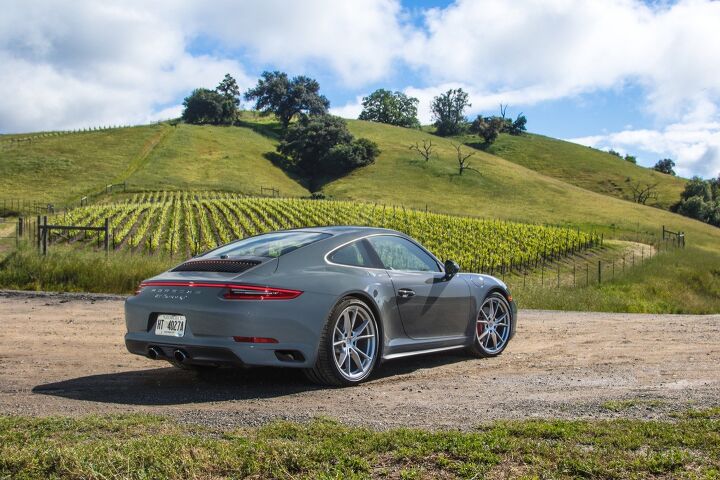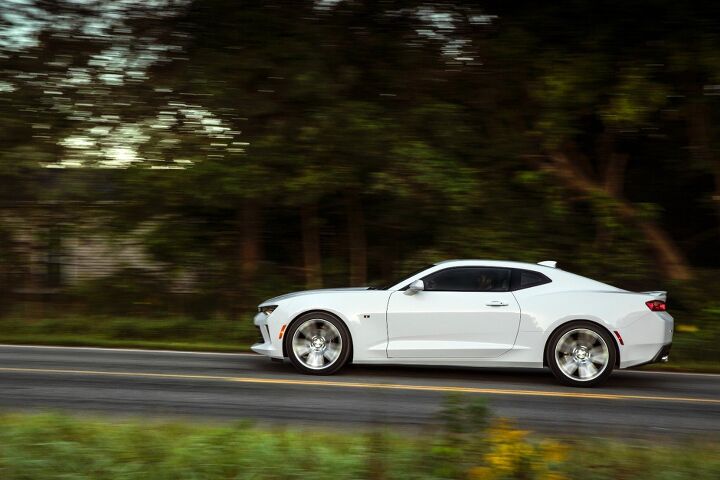#SportsCarSales
Nearly Half of the Vehicles Sold by Porsche in August Weren't SUVs
Porsche revealed a new, third-generation Cayenne on a new platform late last month, but the U.S. arrival of the third version of Porsche’s original SUV won’t take place until the second half of 2018.
While the new Cayenne will be sold in some markets as a MY2018 vehicle, the 2018 Cayenne on this side of the Atlantic is the outgoing Cayenne. Yes, that Cayenne, the Cayenne that’s suffering from a sharp sales decline.
In August 2017, the Cayenne’s gradual and not entirely unpredictable old-age decline was matched to a sudden downward shift from its smaller sibling, as well. Macan sales plunged 29 percent last month. Cayenne volume was down 28 percent. Jointly, the duo lost 1,003 sales, year-over-year.
You know what that means. The overwhelming majority, the lion’s share, most, nearly half, more than a third of the vehicles sold in Porsche’s U.S. showrooms in August 2017 were sports cars. Yes, Porsche still builds sports cars, rather decent ones, in fact. And in August, Porsche’s sports car sales were very healthy indeed.
Five Years on, Scion FR-S/Toyota 86 Has Few Buyers Left, But Still There's a Comparison Test Win up Its Sleeve
Five years have passed since the Scion FR-S — known elsewhere as the Toyota GT86 and known now in America as the Toyota 86 (and at Subaru as the BRZ) — arrived in America. Buyers, never particularly numerous to begin with, are few and far between. Toyota now sells 62 percent fewer Toyota 86s in America than the Scion FR-S managed during its first year.
You expect to see sports cars peak early and then gradually fade. The degree to which the Toyota 86 née Scion FR-S has faded, however, has been more than a little striking. FR-S/86 sales have fallen so far, so fast, that U.S. car buyers are now ten times more likely to acquire a new Chevrolet Camaro, three times more likely to acquire a new Volkswagen Golf GTI, and twice as likely to acquire a new Mazda MX-5.
But is the Toyota 86 deserving of such rejection? Not according to a just-completed CAR Magazine comparison test in which the five-year-old Toyota claimed victory — ahead of the Mazda MX-5 RF and BMW 2 Series.
Camaro Comeback? Chevrolet Camaro Outsold Ford Mustang In April 2017, Sixth-Gen's Best Month Yet
General Motors reported 8,737 Chevrolet Camaro sales in the United States in April 2017, a 17-percent year-over-year increase for GM’s third-best-selling car last month.
For the sixth-generation Camaro, a car that had a decidedly unimpressive launch phase last year after routinely outselling the Ford Mustang for half a decade, April 2017’s improvement led to the best month yet. Not since the oft-discounted fifth-generation Camaro was nearing the end of its line in May 2015 has Camaro volume been so strong.
As for the headline-creating bits, yes, the Chevrolet Camaro beat the Ford Mustang in April 2017 U.S. sales. Camaro wins. Camaro is the victor. To the Camaro go the spoils.
GM must take time to enjoy its Camaro’s victories. Once routine, they’re hardly common now.
Can A Truly Expensive Upstart Sports Car Sell Well In 2017? Lexus Has Very High Hopes For The New LC
Lexus has lofty goals for the new LC performance coupe, a two-car range encompassing V8 and V6 hybrid cars. The Lexus LC, Toyota’s premium division hopes, will attract 400 buyers in America per month.
That’s a big number.
Granted, Toyota sells more than 1,000 Camrys in the United States every day. In fact, Lexus sells 300 copies of the RX, America’s all-conquering premium utility vehicle, every day.
But the 2018 Lexus LC is not America’s best-selling midsize car 15 years running, nor is the LC the dominant luxury crossover in a market gone gaga for luxury crossovers. The Lexus LC, on the other hand, is a $92,995–106,295 Japanese coupe. 400 monthly sales for a two-door priced in that stratosphere is truly a big number.
And Lexus believes it will outsell the Jaguar F-Type, Porsche Cayman, Mercedes-Benz SLC, and Audi TT. Lexus believes the LC will sell roughly three times more often than the Nissan GT-R ever has. Lexus intends to attract more buyers with the LC than Mercedes-Benz can with The Establishment, the SL-Class; more buyers than BMW attracts with the vast BMW 6 Series range.
Why? Lexus certainly has its reasons.
In The Bleak Midwinter: Detroit's Muscle Coupes Stumble Out Of The Gate In 2017
Across much of the United States, January is not the season for pony car purchases.
In fact, January is not the season for big automotive purchases in general.
Auto sales are at their lowest point in January. The rush to buy and lease vehicles in December, when spending comes naturally and time away from the office is easy to come by, is over. The weather typically takes a turn. Wallets are not flush.
Last month, U.S. auto sales dropped 2 percent from January 2016 levels. Blame a 13-percent passenger car downturn.
But the Ford Mustang, Chevrolet Camaro, and Dodge Challenger all tanked at a substantially worse rate than the market at large, following up a disappointing 2016 with January results that had better not set the stage for 2017.
Is It A Trend? Camaro Handily Beats Mustang In October With Big Discounts On Chevrolet's Side
Updated with additional October incentive numbers.
In theory, 2016 should have been the Chevrolet Camaro’s year. Although it’s not over, we already know it won’t be the Camaro’s year.
But the Chevrolet Camaro is making headway as 2016 comes to a close. October was the second consecutive month in which the Camaro outsold the Mustang.
Camaro Vs. Mustang June Update: Camaro Crumbles, Mustang Mopes
After TTAC delved into the details of the sixth-generation Chevrolet Camaro’s gradual decline last month, General Motors reported the worst sales month for the Camaro since November 2014.
June 2016 sales of the Chevrolet Camaro fell to a 19-month low. With only 4,969 sales — a huge number by the standards of most sporting cars but a 40-percent drop compared with the Camaro’s five-year June average — U.S. Camaro volume fell below 5,000 units for just the second time in the last 18 months.
Newly launched this past winter, the latest Camaro’s sales have fallen well below the totals achieved by the six-year-old fifth-gen Camaro in its final — and worst — year on the market. In the first-half of 2015, GM reported 42,593 U.S. sales of the Camaro, a 9-percent year-over-year drop. Yet one year later, the new Camaro is down 14 percent to 36,834 units, a drop of 5,759 sales.



















Recent Comments